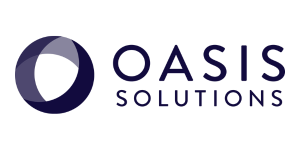Last month, I had the opportunity to attend the first session in a four part series of a Revenue Recognition Crash Course on the new revenue recognition standard, ASC 606: Revenue from Contracts with Customers, hosted by our valued partner, Harding Shymanski & Company.
What is ASC 606?
ASC 606 (or Topic 606): Revenue from Contracts with Customers is a hot topic in the tax world and is intended to improve U.S. GAAP by removing inconsistencies and weaknesses in existing revenue requirements and improving comparability of revenue recognition practices across entities, industries, jurisdictions, and capital markets.
The new standard is effective for public companies beginning after December 15, 2017 (effectively Jan.1, 2018 for calendar year reporters) and December 15, 2018 (effectively Jan. 1, 2019 for non-public entities.
The core principle of ASC 606 is that an entity should recognize revenue to depict the transfer of promised goods or services to customers in an amount that reflects the consideration (that is, payment) to which the entity expects to be entitled in exchange for those goods or services.
The crash course wisely broke the new rules down into several sessions with the focus of the first session being a general overview. Scott Olinger, Vice President in the Accounting and Auditing Department at Harding Shymanski, did a great job presenting on the topic, displaying a deep knowledge of the subject matter which is rather complex.
It is difficult to determine the impact of adopting ASC 606 without getting into the details and analyzing guidance against the characteristics of your entity. Most companies will require the assistance of professional guidance to navigate the new requirements.
The New Five Step Principles-Based Approach
Step 1: Identify the contract(s) with a customer.
Step 2: Identify the performance obligations in the contract.
Step 3: Determine the transaction price.
Step 4: Allocate the transaction price to the performance obligations in the contract.
Step 5: Recognize revenue when (or as) the entity satisfies a performance obligation.
Disclosures
The new standard also includes enhanced disclosure requirements intended to provide financial statement users with comprehensive information about the nature, amount, timing, and uncertainty of revenue and cash flows arising from a reporting entity’s contracts with customers.
In this respect, a reporting entity is required to provide information about:
- Revenue recognized from contracts with customers, including a breakout of revenue into appropriate categories;
- Contract balances, including the opening and closing balances of receivables, contract assets, and contract liabilities;
- Performance obligations, including when the reporting organization typically satisfies its performance obligations and the transaction price that is allocated to the remaining performance obligations in a contract; and
- Significant judgments (and changes in judgments) made in applying the requirements to those contracts
My Observations & Takeaways
An interesting observation is that many of the legacy accounting systems are unprepared for the new revenue recognition standards.
As a NetSuite consultant, I knew NetSuite was prepared for the new standards and introduced Advanced Revenue Management in 2018 to help companies comply with the new standards with a solution that automates revenue forecasting, allocation, recognition, reclassification, and auditing through a rule-based event handling framework.
The key takeaway for me is that many companies have not prepared for the changes, or think they don’t apply, when most companies will likely be affected. Getting up to speed will require a concerted effort from management to determine how their entity is affected and updating their accounting systems/software.
Interested in learning more about how NetSuite can prepare you for ASC 606? Browse videos, whitepapers, and additional resources here: Solving for ASC 606


